Imagine that – instead of Washington DC – George Washington personally established the United States’ foremost seaside resort, Washingtonville, and that it was the top vacation spot for Americans for decades. That should give you an idea of how Cambodians view Sihanoukville. King Norodom Sihanouk, after negotiating bloodless independence from France, founded Sihanoukville; Cambodia’s only modern deep sea port and the most popular seaside resort for Cambodians.
That was how I knew Sihanoukville during my first term of service in Cambodia. Foreigners preferred to visit quieter beaches, like Kep, while Sihanoukville was the Khmer destination of choice. That changed rapidly towards the end of the 2010s when Sihanoukville became a key city in China’s Belt and Road Initiative.

The massive inflow of Chinese investment completely transformed Sihanoukville in just a couple of years. By 2020, it was estimated that approximately 200,000 mainland Chinese workers, developers, and investors lived in Sihanoukville. Contrast this with the 2019 census which showed that 73,036 actual Cambodians lived in Sihanoukville.
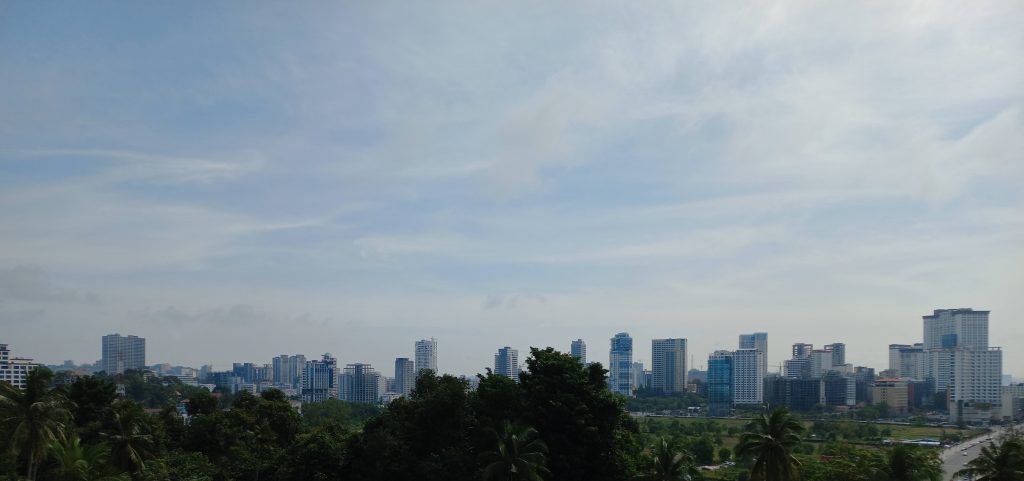
In news and politics, Chinese influence is often presented as monolithic but Sihanoukville tells a different story. Formal Chinese government and business investments played a large role in the city’s development but Sihanoukville also became a favored location for Chinese mafia evading restrictions in the mainland. Cambodians told me that they were afraid to visit the city due to street violence between foreign gangs.
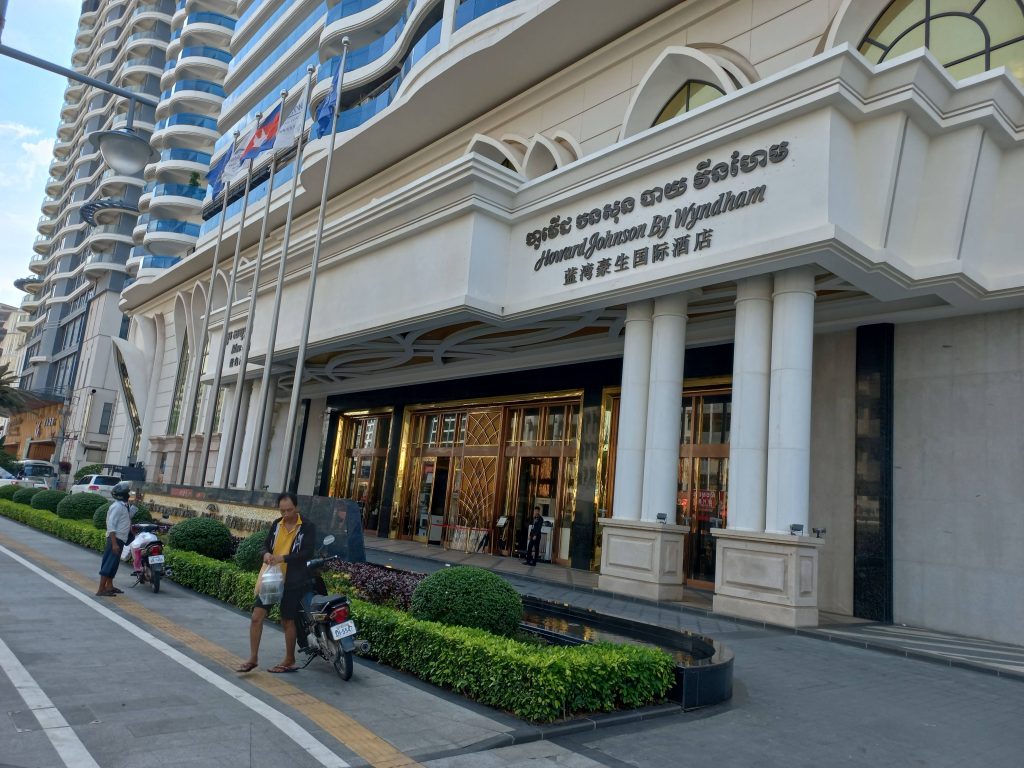

Casinos came to exemplify Sihanoukville’s transformation. The 1996 Law on Suppression of Gambling makes it illegal for Cambodians to engage in ‘unauthorized’ gambling. There’s always been some low level gambling despite this, card games and cock fighting, but Cambodians are forbidden from gambling in casinos. Prior to 2019, there were 50 to 100 casinos (there are disputing counts) in Sihanoukville built and operated for foreigners; primarily Chinese evading their country’s own restrictions on gambling.

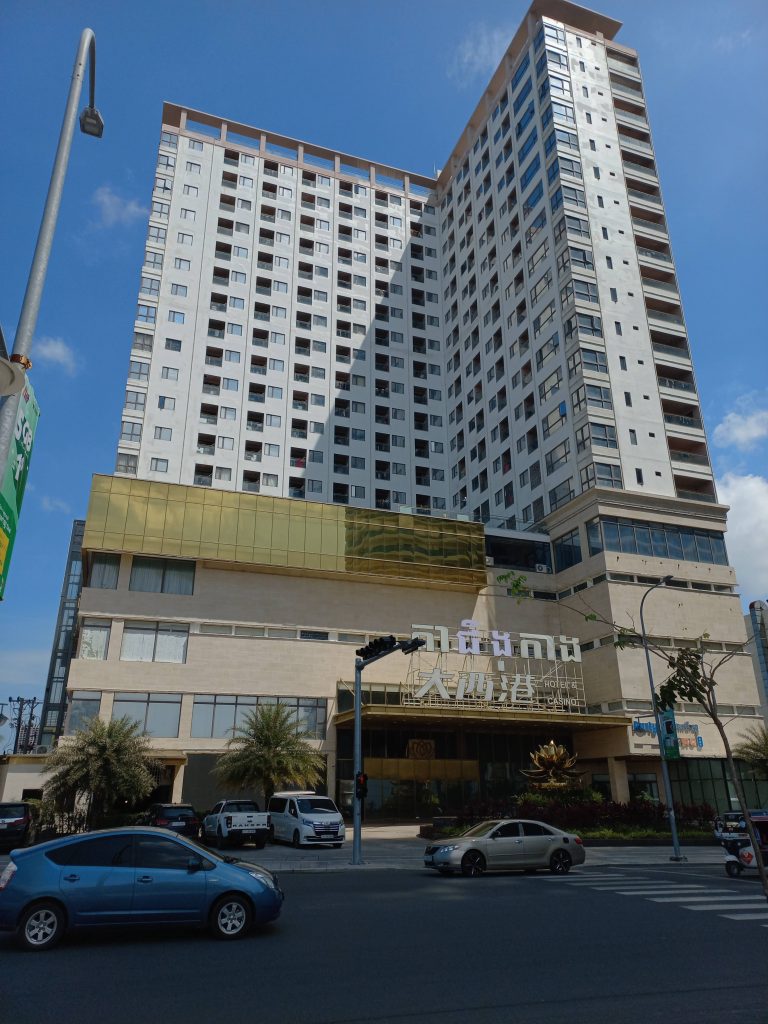
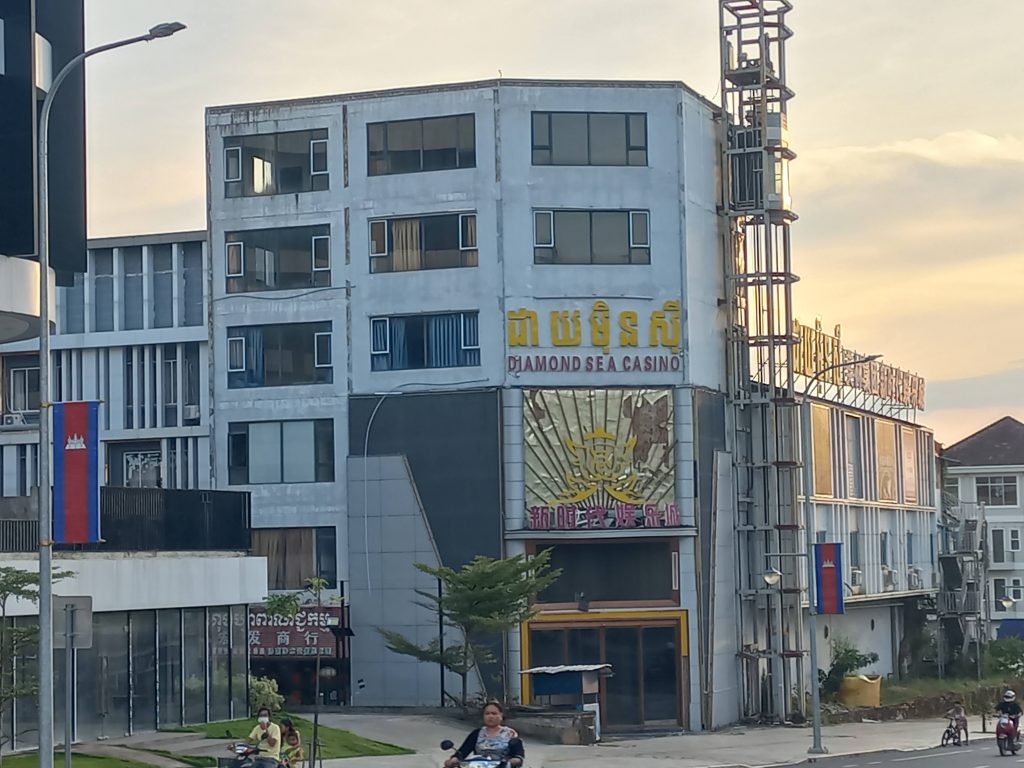
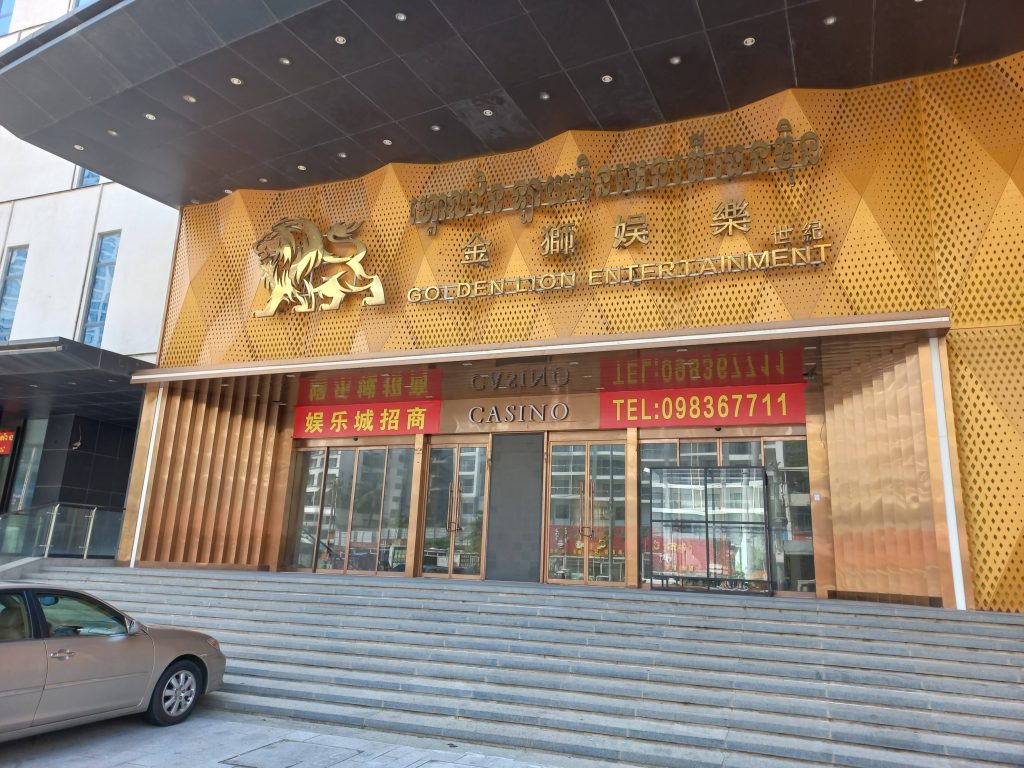
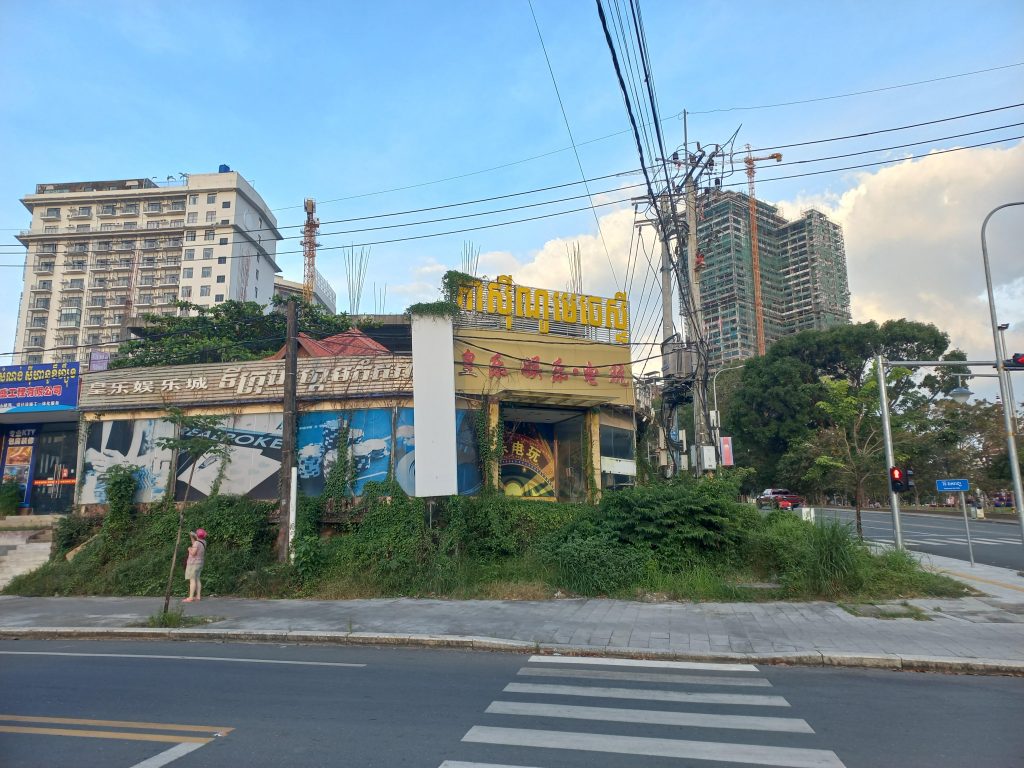
Many foreign investors see Cambodia, including Sihanoukville, as the next big regional construction boom. Eager not to miss out they commissioned ambitious construction projects. Some of this construction was made in good faith and resulted in the high quality buildings sprinkled across Sihanoukville. However… Many regional construction companies, the highest profile example being China’s Evergrande, operate off of deep debt that they continually push off with new projects. The corporate equivalent of paying off a credit card with a new credit card. Whether or not there are people who can afford the product or if the product is of sufficient quality are distant concerns to continuing production so that another loan can be secured. And there are significant rumors that Chinese mafia have used construction projects to launder money; hiring their own firms to rapidly build subpar construction at highly inflated prices as a way to legally return money to their affiliates in mainland China.
Shortly before we moved to Cambodia in 2019 there was a tragic building collapse in Sihanoukville that killed 28 workers and injured 26 other. This was followed by a another building collapse in Kep in 2020. These high profile disasters highlighted that safety standards were being ignored and subpar materials were being used during the construction boom. The Cambodian government response, when it came, was stern; charging seven developers with involuntary manslaughter, forcing the governor of Sihanoukville to resign, and ordering the demolition of several illegal buildings.
The United States has claimed that, in a violation of the Cambodian constitution and the 1991 Paris Peace Agreements, that Cambodia has made a secret agreement with China permitting them use of a naval base located near Sihanoukville. This has been denied by Cambodian officials as ‘fake news.’ In 2021, the Defense Minister acknowledged that China was helping to build the base’s infrastructure but stated that there were no strings attached. China has been building artificial islands in the disputed South China Sea to strengthen it’s claims and having access to a mainland naval base on the southern end of the sea would significantly strengthen it’s position.
There have been a number of articles on Sihanoukville over the years but one of the more informative ones was published in 2020 by The Atlantic. I’d recommend reading it if you’d like a more in-depth background.
In October 2020, responding to pressure from the Chinese government, Cambodia passed a comprehensive gambling law to regulate the exploding casino industry and prevent Cambodia from being used to host online gambling targeting mainland China. The law also included measures to counter gambling being used for money laundering and the financing of terrorism. Cambodian Law Enforcement has since stepped up it’s anti-gambling measures and there’s been a dramatic decrease in reports of street crime in Sihanoukville.
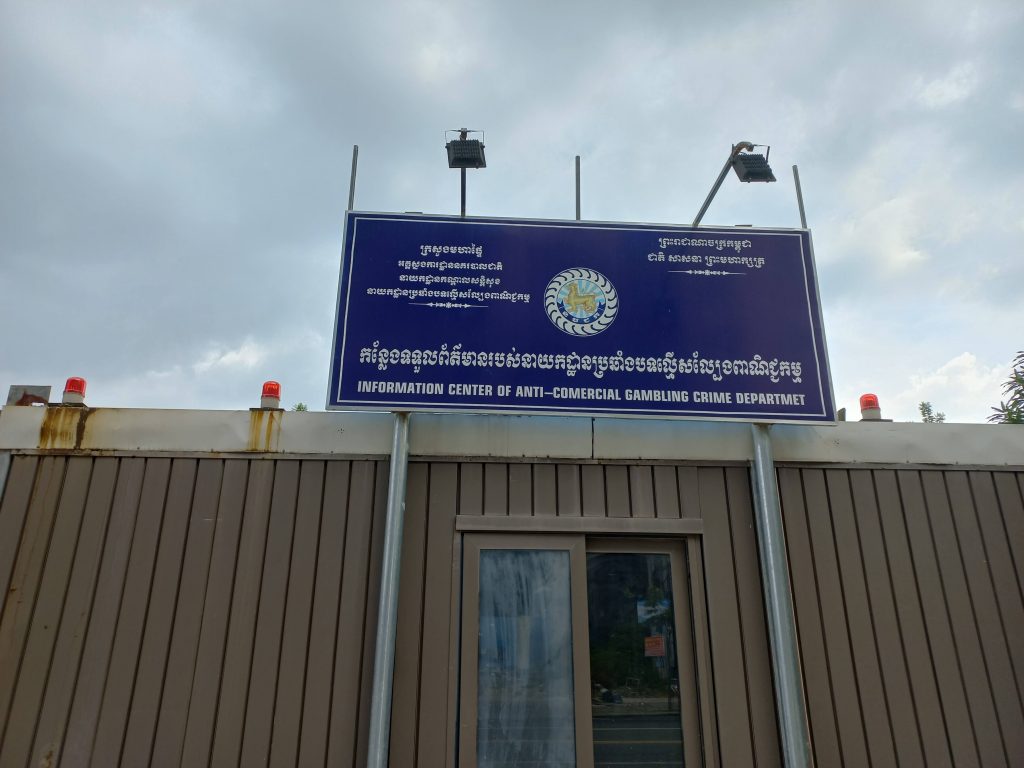
In 2020, the construction boom that had transformed Sihanoukville stopped dramatically due to the COVID-19 pandemic and the new restrictions on gambling and online casinos.
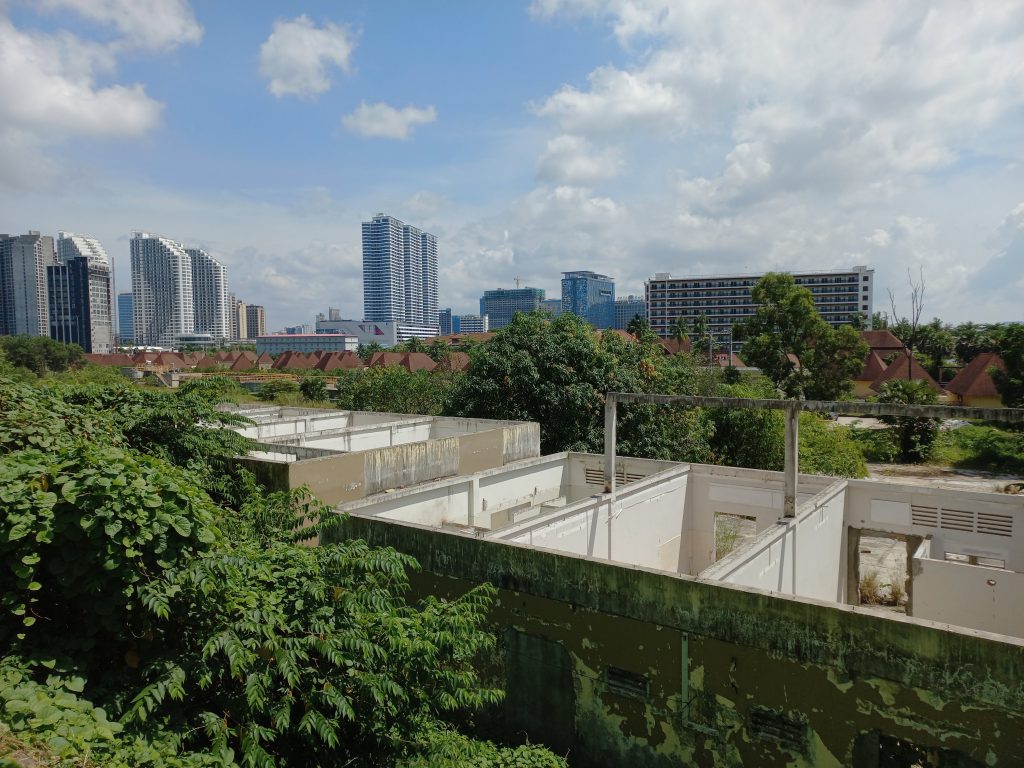
The result is a city of extreme contrasts. Beautiful but empty high rises; some already crumbling after less than five years due to subpar construction. Dozens upon dozens of half finished buildings standing empty; some already being reclaimed by nature. Pristine ocean seafronts lined with mismatched development. An array of new, more modest construction projects.
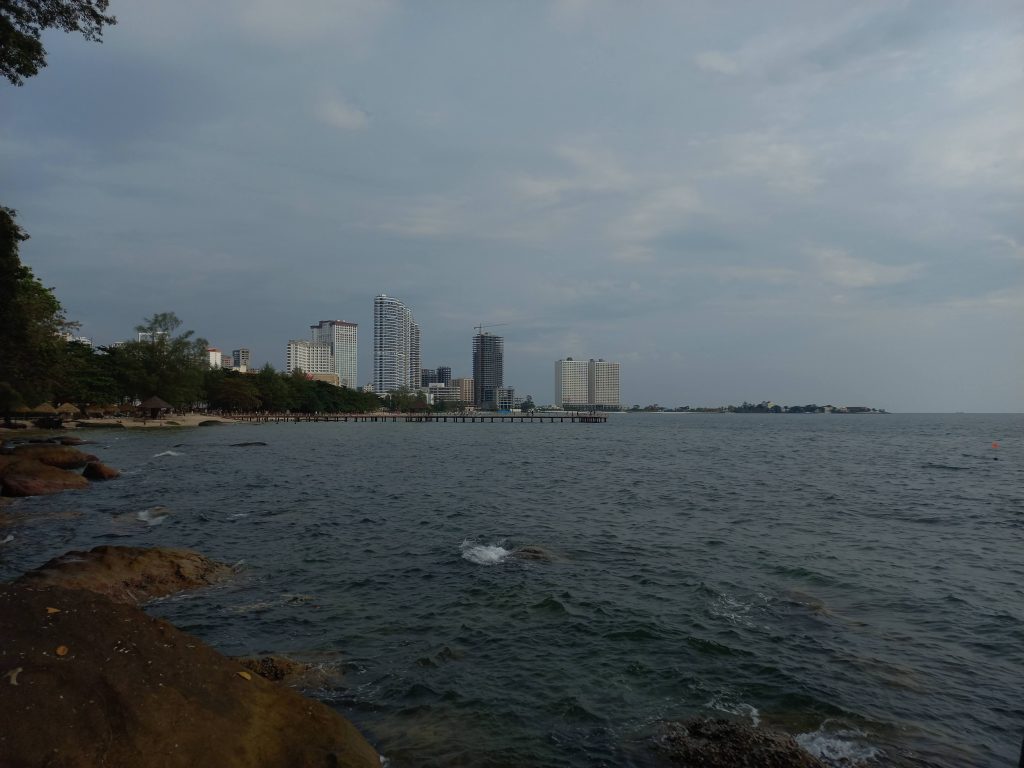
Sihanoukville was the first place in Cambodia outside of Phnom Penh that I visited in 2006. Bleary with jet lag I joined the MCC team on a visit to the MV Logos Hope which was anchored at Cambodia’s only deep water port. I later returned to Sihanoukville with the MCC team on repeated staff retreats. It was the favorite destination of our Cambodian staff and the one they selected year after year.
Last week, we traveled to Sihanoukville for the first time since my return to Cambodia. Phnom Penh was hosting the ASEAN summit (which meant lots of road closures due to motorcades) and the MCC office was closed for the national holidays of Independence Day and Water Festival. We decided to stay at the Independence Hotel in Sihanoukville – a historic resort that hosted Jacqueline Kennedy on her visit to Cambodia in the 1960s – that had a fantastic deal on Agoda. I think Sihanoukville still has a bad reputation from the last few years so hotels have been offering great discounts to compensate. It’s always strange to stay at historic places like this and consider that the building stood empty during the Khmer Rouge era. If these walls could talk what stories would they tell?
We ended up having a wonderful time. Sihanoukville is the only city in Cambodia that I’m nervous walking around at night and staying at Independence Hotel provided a buffered safe space that we could venture out from as we felt comfortable.
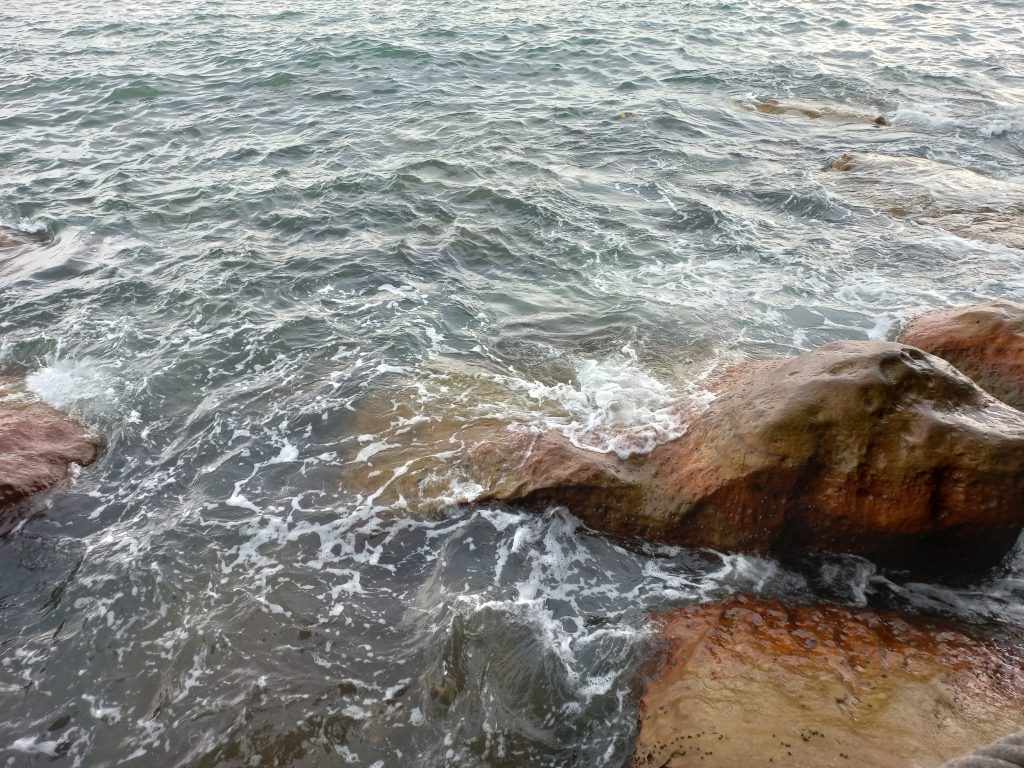
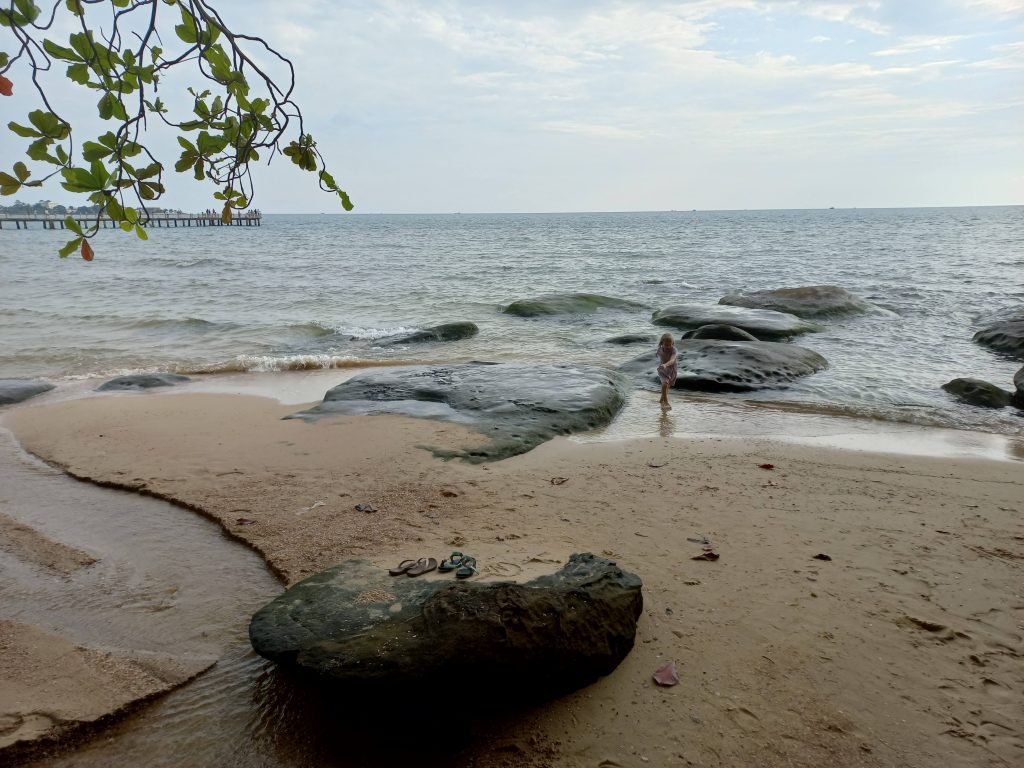
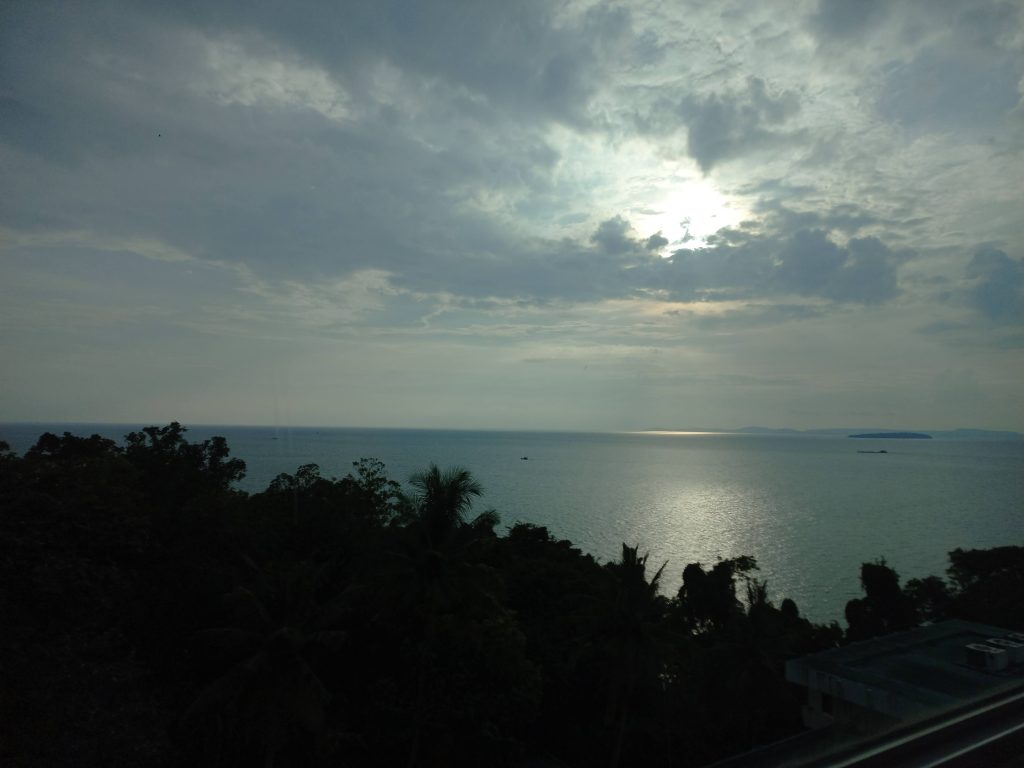
The Independence Hotel has a private beach – which I felt conflicted about – but it was nice not to have trash in the sand. At our last visit to the Kep beach – just after International New Years – we found broken glass, used needles, and mountains of trash so it was nice not to have to watch for that. The nature was absolutely stunning and the only things to watch for were crabs and barnacles.
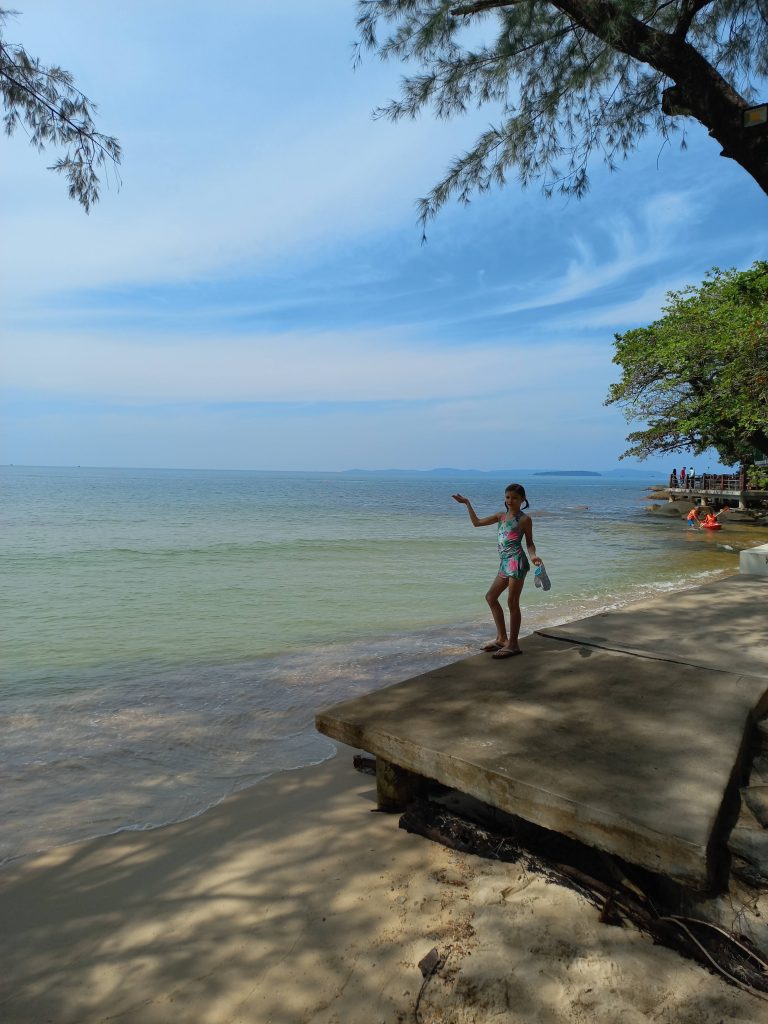
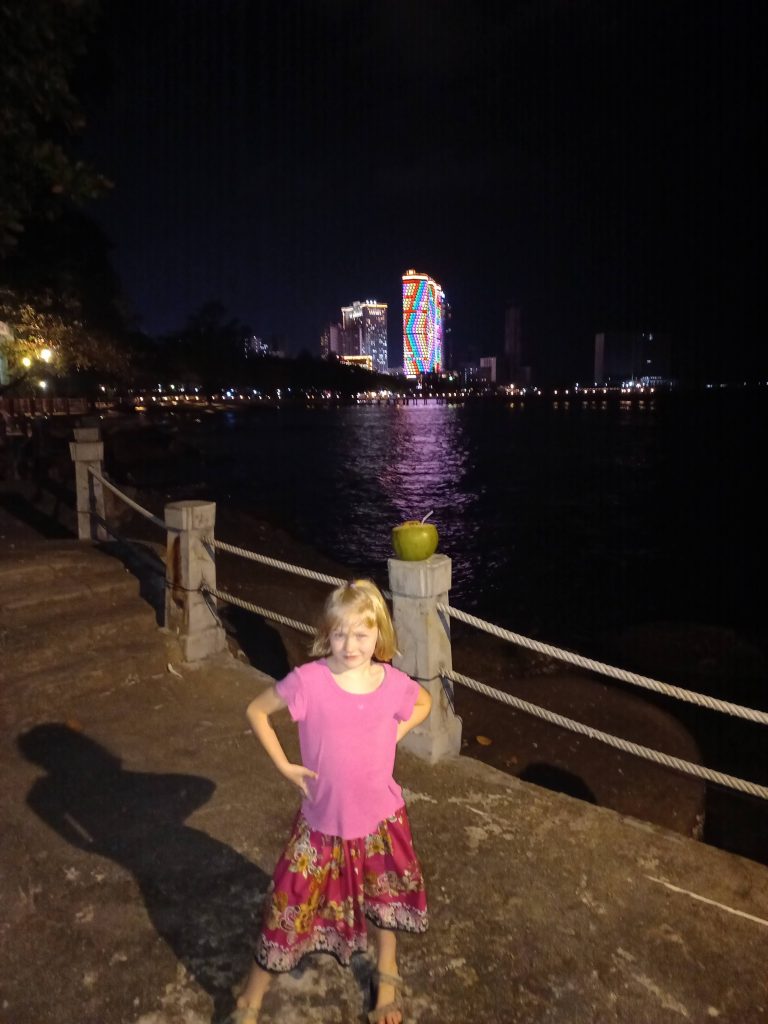
I wasn’t sure what to expect from Sihanoukville based on the news articles I’ve read and the firsthand reports that I’ve heard from Cambodians. It was, certainly, a very different place from when I last visited in 2009. Many of the high rises in Phnom Penh are also partially empty but this was dialed up to the extreme in Sihanoukville. It’s a stark demonstration of development for development’s stake. So many empty buildings that will likely never be used by anyone.
But I had the sense that it’s beginning to enter a new phase of development where, hopefully, it will begin to feel like a safe place for Cambodians to visit again. There are clear signs that the government that is working to open up safe public spaces for Cambodians.
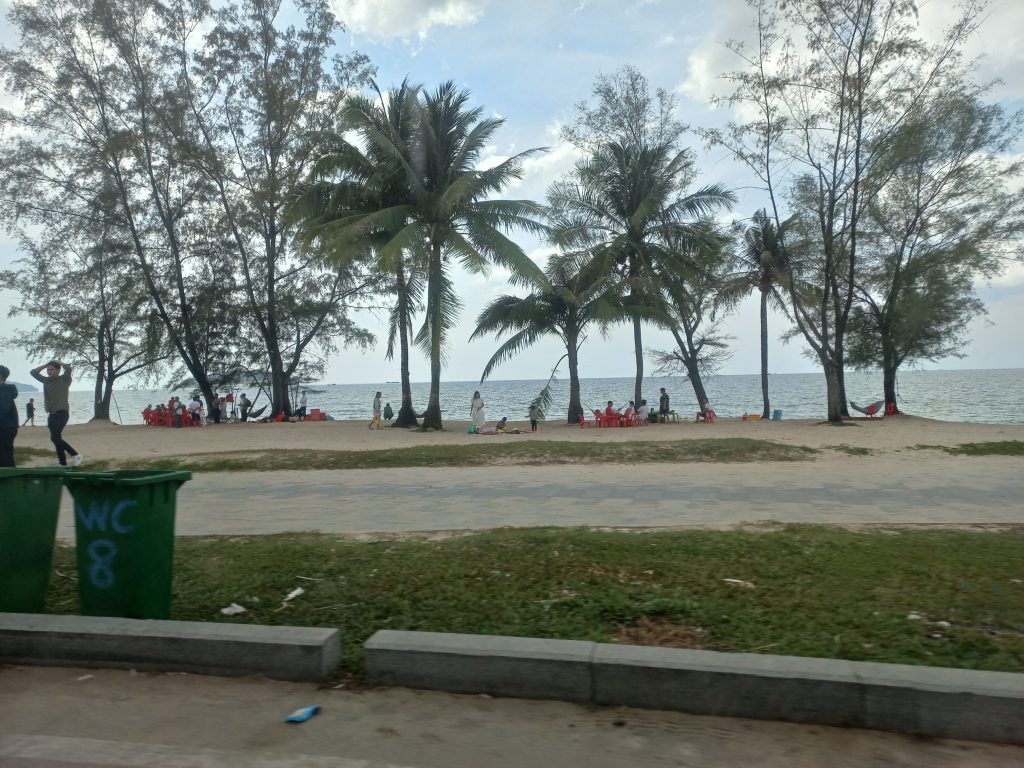
We took a different route out of Sihanoukville on our way back to Phnom Penh and drove by the new public beaches. These are replacing those that were sold out from under “squatters” to resorts and foreign investors. They were, for a time, covered with huts but those were recently demolished. There were still few Cambodians here as compared to Kep or Kampot. But, hopefully, that will continue to change.
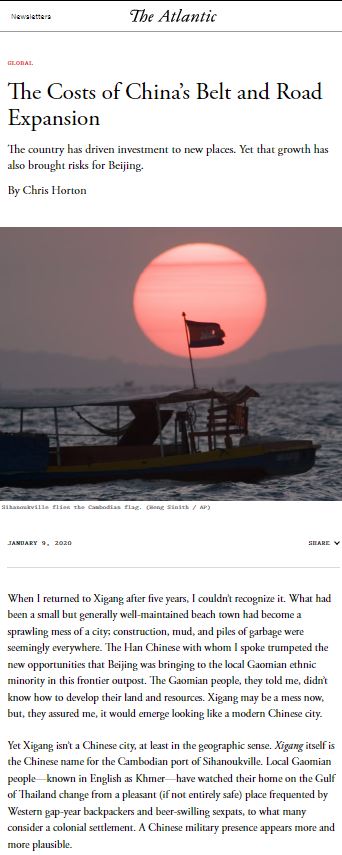
Wow, I had not realized things were changing to that extent. It was pretty much all dusty roads and land mines in the late 90s. Glad to see that the government is beginning to rescue it!
It was a dramatic transformation! Hopefully we’ll see less development for development’s sake and more development for the people’s sake.
Thanks, Charles and Crystal. The scenery is indeed stunning. Glad you find time to bring your family to the waterside. The best to you all. Love, Mary and Hubert